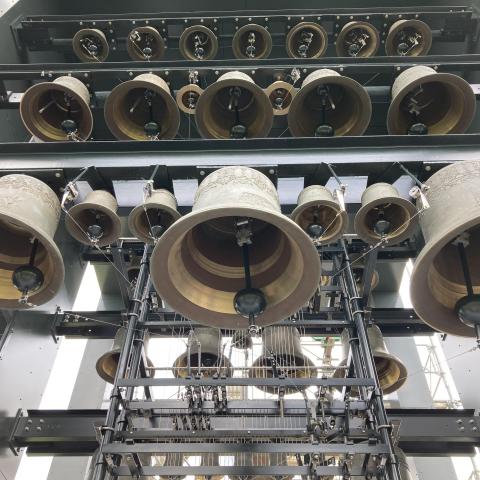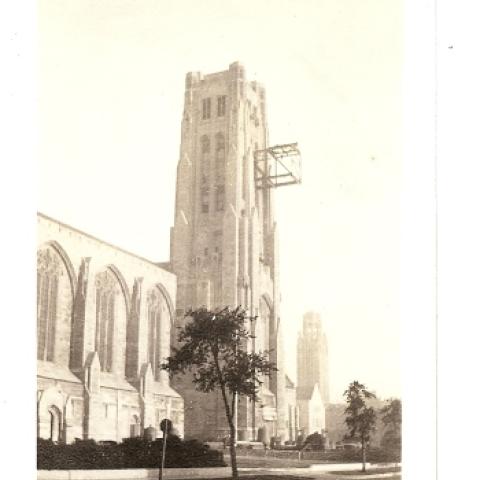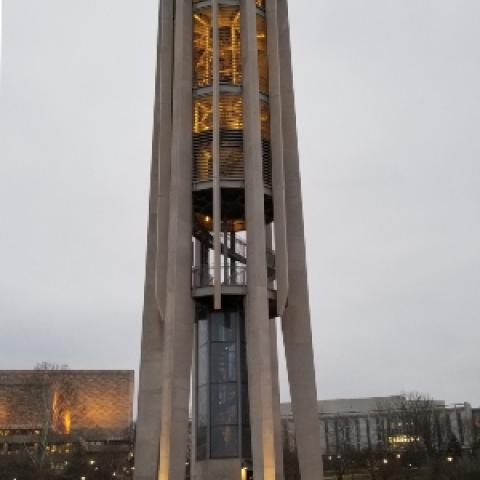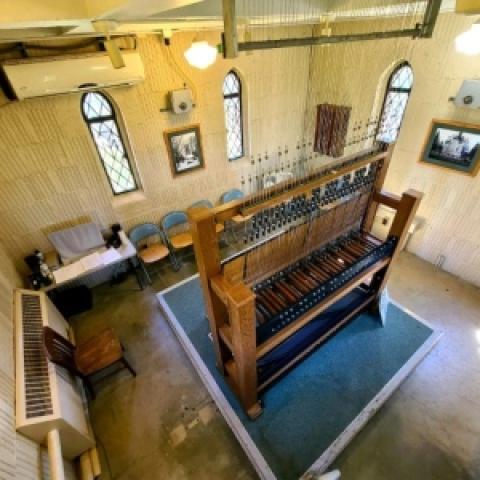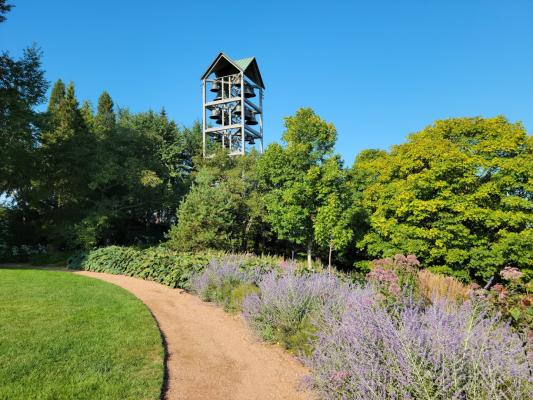
Chicago Botanic Garden's Theodore C. Butz Memorial Carillon
The Theodore C. Butz Memorial Carillon stands in the idyllic location of the Chicago Botanic Garden, in the suburb of Glencoe, perfectly suited to engage and accommodate their large audiences. The carillon is housed in a modest-sized open tower with large glass panels on all sides of the playing cabin, allowing garden visitors an excellent view into carillonists’ performances. The tower is situated on Evening Island, which is across the Great Basin from a large lawn where hundreds of listeners have gathered on summer evenings to hear concerts by carillonists from around the world since June 1987.
The carillon was generously donated by Mrs. Harold “Mitzi” James, a member of the family that formed the Butz Foundation. Wanting to give to the garden, which was in the area where she had spent much of her life, Mitzi immediately decided upon a carillon when shown the garden’s master plan with the instrument drawn in. Petit & Fritzen of the Netherlands (now merged with Eijsbouts) cast the bells, while Verdin of Ohio installed them. The instrument is a standard size of 48 bells (four octaves) and bourdon C weight of 5,000 pounds. It does not transpose.
The Butz carillon was dedicated on October 19, 1986. Carillonist Wylie Crawford performed the recital, which included the commissioned piece, “Prelude, Intermezzo & Finale,” by Ronald Barnes.
The following June, the annual summer carillon concert series began, thanks to the generous support of the Butz Foundation. The Monday evening concerts commence in mid-June and last until the end of August, drawing hundreds of attendees at each event. Before performing, the featured carillonist gives demonstrations of the instrument to the curious. Due to ongoing Covid restrictions, the garden cancelled the summer carillon concert series in 2020 and 2021.
The instrument has undergone some updates since its installation 35 years ago. In 2006, again thanks to the generosity of the Butz family via Elvira Butz, the garden obtained a practice carillon keyboard in order to facilitate performer practice and carillon lessons, led by Wylie Crawford. In 2014–2015, Meeks & Watson of Ohio replaced and updated carillon components that had been water damaged or over exposed to the elements. Major features of their project consisted of replacing and renewing the transmission system, restoring clappers, removing rust and repainting metal components, replacing support bolts, and repairing water damage on the wooden keyboard and bench.
Currently the carillon is performed on weekday mornings from 8:00–9:00 a.m. by the Botanic Garden Carillonist Wylie Crawford and other local carillonists.

